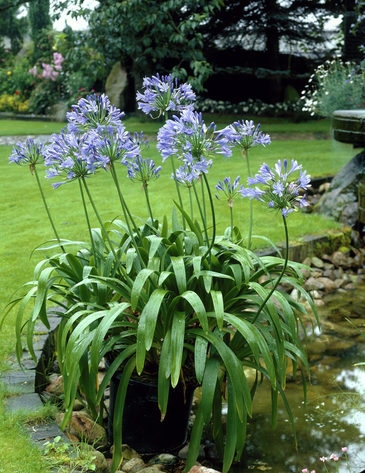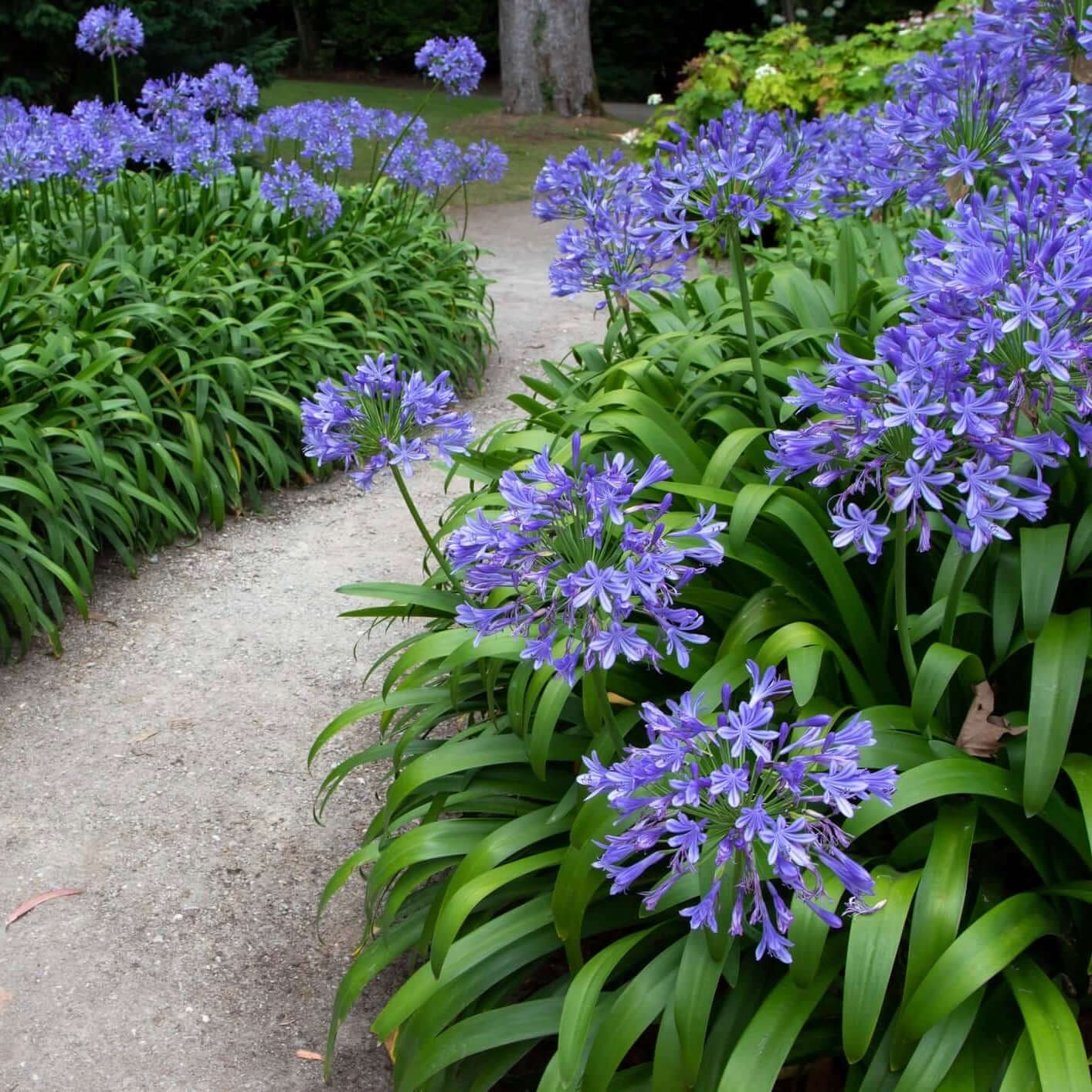Mastering the Art of Agapanthus Treatment: Vital Actions for Healthy And Balanced Development and Lively Blossoms
In the world of gardening, the growing of agapanthus stands as a fulfilling endeavor for those who seek to support these elegant blooming plants. With their striking blooms and graceful foliage, agapanthus has recorded the attention of garden enthusiasts worldwide. Nonetheless, achieving optimum growth and vivid blooms calls for a nuanced method that incorporates various vital actions. From picking the ideal range to understanding trimming methods, the journey towards cultivating prospering agapanthus plants is complex and holds the essential to unlocking the complete possibility of these organic treasures.

Picking the Right Agapanthus Selection

When picking the appropriate Agapanthus range for your yard, take into consideration elements such as environment suitability, blossom shade, and development habit. Agapanthus, typically referred to as Lily of the Nile or African lily, comes in a variety of colors varying from tones of blue and purple to white. Pick a bloom color that matches your existing garden palette to produce an unified landscape. In addition, think about the climate in your region to make sure the Agapanthus selection you select can grow in your details conditions. Some varieties are much more forgiving of cool temperatures, while others favor warmer environments. Understanding the growth habit of different Agapanthus ranges is critical for correct positioning within your yard. Some ranges have a clumping development practice, perfect for containers or borders, while others have an even more dispersing nature, ideal for ground cover or mass growings. By very carefully reviewing these elements, you can choose the excellent Agapanthus variety to enhance the beauty of your yard.
Ideal Planting Problems
Taking into consideration the optimal environmental needs is crucial for effective Agapanthus cultivation. Agapanthus grows in well-draining dirt with a slightly acidic to neutral pH degree. When growing, choose a location that receives full sunshine to partial shade. In hotter climates, providing some mid-day color can stop scorching of the fallen leaves. Agapanthus plants are delicate to chilly temperature levels and ought to be protected from frost during cold weather.
To make sure healthy and balanced development and vibrant blossoms, plant Agapanthus light bulbs at a deepness of concerning 2-4 inches and space them 8-12 inches apart. Adding raw material, such as garden compost, to the dirt can improve water drainage and fertility, advertising durable origin advancement. Mulching around the base of the plants helps retain dampness and subdues weed growth. Routine watering is crucial, especially during the expanding period, to maintain the soil constantly damp yet not waterlogged.
Watering and Feeding Tips
Preserving proper moisture degrees and providing essential nutrients are crucial elements in the treatment regimen for Agapanthus plants. Click Here It is vital to strike a balance when it comes to sprinkling Agapanthus. If overwatered, these plants favor continually moist soil but are at risk to root rot. Throughout the expanding season, water deeply as soon as a week, making sure the dirt is well-draining to stop waterlogging. In hotter climates or during durations of dry spell, more regular watering may be required to maintain Get More Information the dirt evenly wet. However, minimize watering in the winter to avoid waterlogged problems.
Feeding Agapanthus is essential for promoting healthy development and prolific flowers. Apply a balanced fertilizer, such as a 10-10-10 formula, in the early spring as brand-new development emerges. By following these watering and feeding tips, you can guarantee your Agapanthus plants thrive and produce vivid, lasting flowers.
Pruning Techniques for Agapanthus
Pruning Agapanthus plants at the appropriate times and with correct techniques is essential for preserving their wellness and promoting ideal growth and blooming. The optimal time to prune Agapanthus is in late wintertime or early spring before brand-new growth arises.
Deadheading invested blossoms can additionally redirect the plant's energy into generating even more flowers instead than establishing seeds. If you want to accumulate seeds for proliferation, leave some flowers to fully grown and dry on the plant.
Keep in mind to make use of clean, sharp tools to make exact cuts and lower the danger of presenting diseases. Agapanthus. Regular trimming will aid maintain your Agapanthus looking neat and healthy and balanced while ensuring a plentiful display of beautiful flowers
Handling Typical Insects and Conditions
After making sure appropriate trimming methods for Agapanthus, it is essential to address common parasites and illness that can affect the health and wellness and vitality of these plants. One common bug that affects Agapanthus is the Agapanthus gall midge.
Furthermore, Agapanthus plants can suffer from root rot if they are grown in badly draining pipes dirt. By being watchful and taking punctual activity against diseases and insects, you can help your Agapanthus plants flourish and generate vivid flowers. Agapanthus.

Conclusion
To conclude, understanding the art of agapanthus care entails choosing the ideal variety, giving excellent growing conditions, appropriate watering and fertilizing, ideal pruning techniques, and attending to usual pests and conditions. By following these necessary actions, you can make certain healthy growth and dynamic blooms for your agapanthus plants. Remember to frequently keep track of and keep your plants to advertise their total health and longevity.
To make certain healthy growth and vivid blossoms, plant Agapanthus light bulbs at a depth of about 2-4 inches and space them 8-12 inches apart. By adhering to these watering and feeding ideas, you can ensure your Agapanthus plants thrive and generate lively, durable blossoms.
One typical parasite that influences Agapanthus check that is the Agapanthus gall midge. Additionally, Agapanthus plants can endure from root rot if they are grown in inadequately draining pipes soil. By adhering to these necessary steps, you can make sure healthy development and dynamic blossoms for your agapanthus plants.